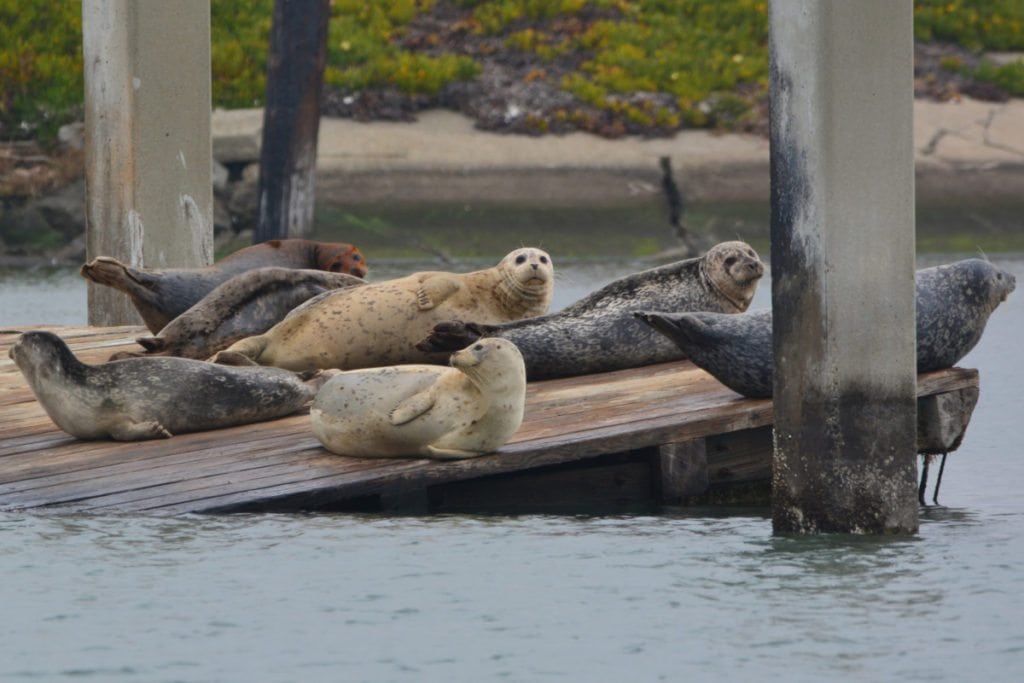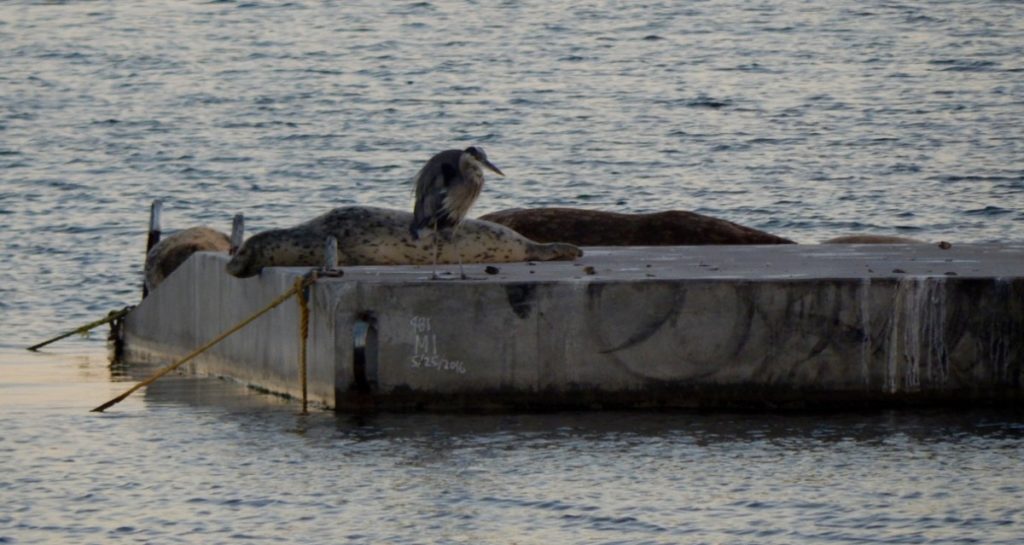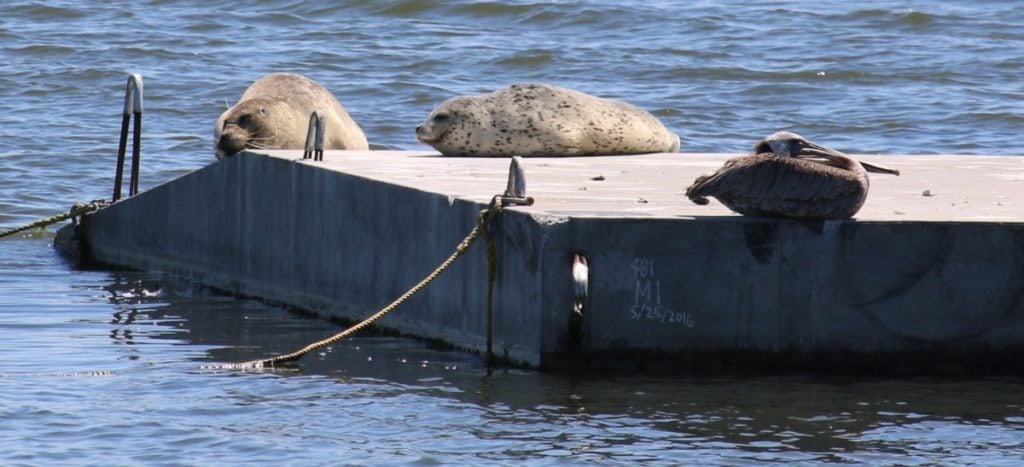Harbor seal haven in Alameda
By Ilana DeBare
Golden Gate Bird Alliance is for the birds. But not JUST for the birds.
This month, we were delighted to see results from our advocacy on behalf of a colony of harbor seals in Alameda.
Harbor seals — five to six feet long, with spotted coats in a variety of colors — spend about half their time on land and half in the water. “Hauling out” onto land allows them to rest and to warm up from the cold Bay waters, which is particularly important when they are molting. Harbor seals are social with each other but shy of humans. They usually gather in much smaller groups than California sea lions, the “celebrity” pinnipeds that delight tourists at San Francisco’s Pier 39.
At Alameda Point, harbor seals had been hauling out for years onto an old wooden dock between Encinal Beach and the U.S.S. Hornet. Golden Gate Bird Alliance members often spotted 6-12 seals resting on the dock. One one occasion, there were 33 seals on the dock at once!
Last year, though, the haul-out faced imminent destruction when the Water Emergency Transportation Authority (WETA) negotiated a lease with Alameda city officials to build its new headquarters with an adjacent ferry maintenance terminal there.

GGBA members and seal fans spoke up at the Alameda City Council hearing when the lease was up for consideration. We pointed out that harbor seal habitat is protected under the Marine Mammal Protection Act, and recommended that the city require WETA to provide a suitable replacement haul-out nearby under the guidance of a competent marine biologist.
Surprised to learn about the seal population and its fan club, the City Council placed a rider on the lease agreement that required $100,000 in escrow for mitigating the project’s impacts on seals.
With input from GGBA, WETA hired a veteran marine biologist to identify a good location and design a special haul-out that would meet the seals’ needs. Seal advocates met with the biologist to scout locations and provide input on a haul-out design for Alameda’s waters. Last month, a new floating platform — a concrete platform with a long, wide ramp resting on buoyant materials — was installed.
The floating platform was initially placed just next to the old dock on June 22. Both structures were left in place for a short while to acclimate the seals to the platform’s presence. A new Alameda Point Harbor Seal Monitors group made up of GGBA members and other Alameda wildlife lovers monitored the site anxiously to see if the seals would investigate the new structure. The seals didn’t seem interested. On the last day before removal of the old dock, two seals were spotted on the edge of the old dock near the new float — but not on it.
Then, on July 11, the old dock was removed.
“The first day we had one seal observed on the new dock, the second day two, the third day three, and by the fourth day, seven were using it,” said GGBA Executive Director Cindy Margulis, who has been helping monitor the seals. “They apparently really like it. They are luxuriating on it.”


The floating dock will gradually be moved further out and anchored offshore, several hundred yards from the pending noisy construction zone and future ferry maintenance terminal but still visible from the land. Meanwhile, citizen monitors led by Mark Klein, who presented on harbor seals at Golden Gate Bird Alliance’s Wild in Alameda symposium earlier this spring, are keeping track of the seals to see how they fare with the changes.
Though harbor seals were the impetus, the new haul-out benefits birds too! Species that like to roost on platforms include Double-crested Cormorants, Black Oystercatchers, Brown Pelicans, herons, egrets, and gulls.
And it benefits people, who will be able to enjoy seeing the seals from the segment of the Bay Trail that runs from Encical Beach to the Hornet.
Margulis credited GGBA’s partners in this project — the City of Alameda, WETA, and members of the Alameda Point Harbor Seal Monitors — with helping create this win-win solution.
“This is a great cooperative effort proving that when people with good will put their heads together, they can create solutions that work well for both wildlife and the public,” Margulis said
